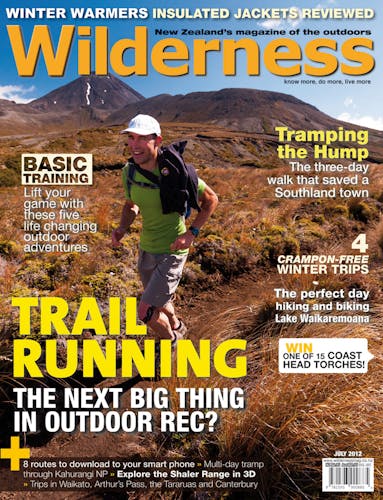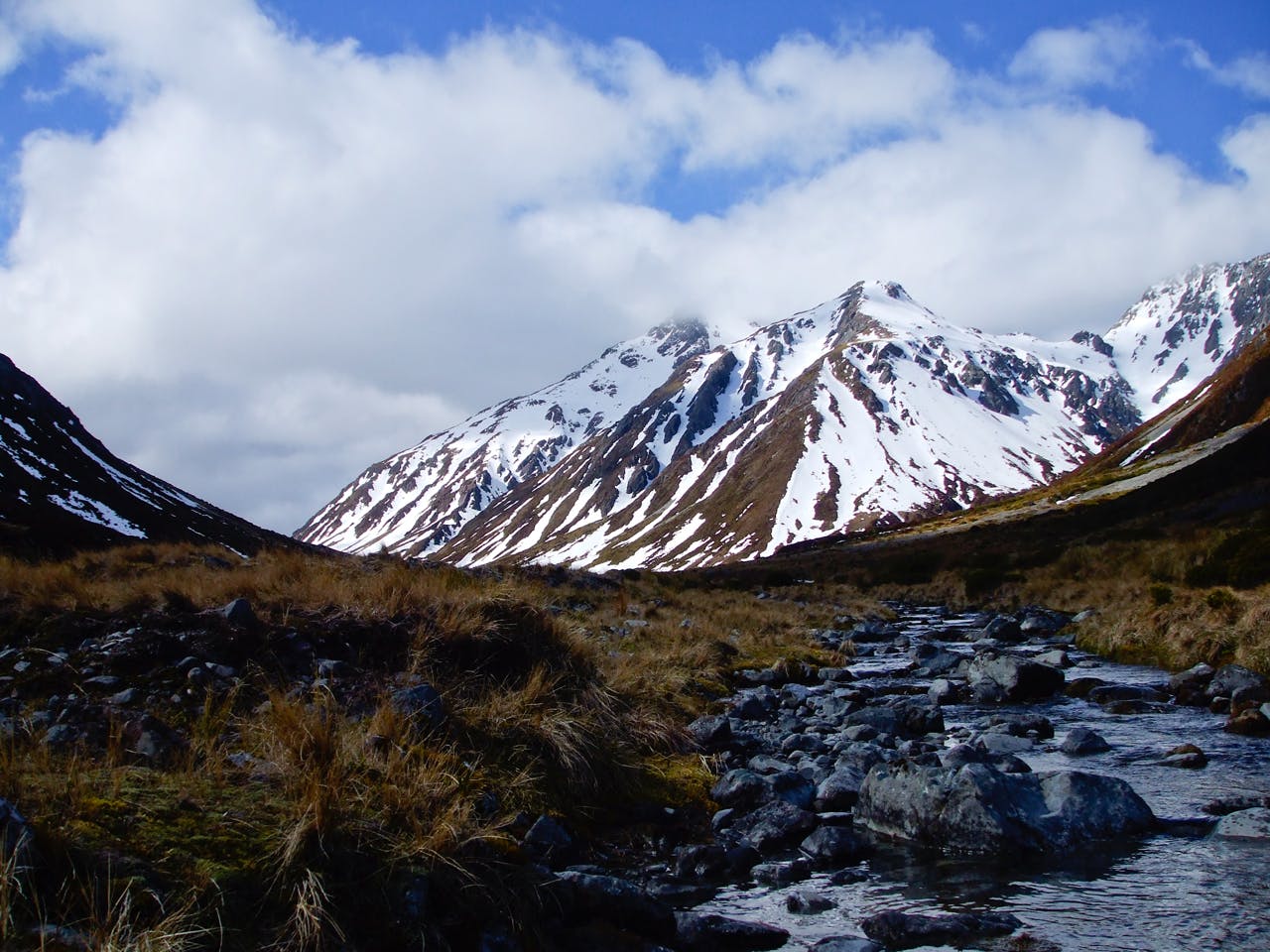- Time
- 2-3 days
- Grade
- Moderate
- Access
- Greyney’s Shelter, 4.5km east of Arthurs Pass
- Map
- BV20, BV21
- Links/Files
- Download the route notes, maps and GPX file
Amber Col, Arthur’s Pass National Park
The goal was to find a trip that would be both a challenge and build our confidence in winter conditions. Arthur’s Pass offered all grades of difficulty as well as the majestic beauty of the Main Divide so we chose Amber Col on the south-western flanks of Falling Mountain as our objective. Having Edwards Hut as a backup with its mountain radio was reassuring.
Our starting point, Greyney’s Shelter, lay just west of Klondyke Corner. We shouldered our packs and looked up the Mingha Valley to the sight of ominous black clouds rolling in over the peaks to the north. Crossing the Mingha and Bealey Rivers at their confluence was easy in the low flows.
Safely on the other side, the markers beckoned us into the gloomy forest and the entrance to the Edwards Valley. We emerged onto the banks of the narrow but fast flowing Edwards River an hour later, just as the clouds moved in with some heavy showers. We took advantage of a well grassed river bank to set up camp. It was time to have a hot meal. Between rain salvoes, occasional glimpses of fresh snow on the peaks above whetted our appetites for what lay ahead.
The following morning was an easy walk up the valley on the true left, which led to the east Edwards tributary. Now the route began to climb up the gorge bypass, with glimpses of the freshly swollen Edwards River thundering over some impressive falls below us. Some windfall made sections slow going with our heavier than usual packs, but by late morning we emerged onto some tussock which indicated we were clear of the forest and into the Alpine meadows. Edwards Hut was just ahead, and we were fortunate to receive the Cantebury Mountain Radio weather forecast at midday. After drying out our tent in the sun we had a quick lunch and headed on up the valley, crossing and recrossing the Edwards which was now a little more than a stream.
We began encountering larger snow-covered areas and soon found ourselves postholing, slowing our pace. By about 4.30pm we found an avalanche safe zone to camp for the night. As dusk crept up, we were set upon by a flock of kea that brazenly inspected and tested our gear.
Dawn broke, windless, white and perfectly peaceful. Cold as it was, we thrust ourselves out of warm cocoons and sipped at our scalding hot mugs of sweet tea, squinting up at Falling Mountain’s south west flank. A cirque lay in the frozen shadows leading up to Amber Col, patiently waiting for us. Strapping on crampons our nervous apprehension morphed to pure joy as the teeth bit solidly into the frozen surface. The snow was solid, packed and stable.
Although the angle was steep, we inched our way up 10 steps then plunged our ice axes into the snow and rested. This was our routine until we reached the small alpine meadow just below the col.
The sun had risen onto the east face of Mt Oates and Mt Franklin, both radiant peaks splashed against a cobalt blue sky towering above everything else. The wind was blowing hard and icy from the Main Divide as we crested the col, and immediately I sank up to my hips in a soft powder drift.
To our left Falling Mountain’s snow-blasted summit beckoned only a few hundred meters away.
Retracing our almost invisible tracks, we glissaded with glee down the steep snow ramps, using our ice axes to control our trajectories and speed. Tired, exhilarated, and seeking the safety of the valley below before the now brooding skies let loose, we recalled our climb with euphoric outbursts. Our trip was indelibly etched into our minds as one of our most memorable. Amber Col . Great camping, total solitude, perfect conditions, dazzling us with an exceptional alpine experience.
– Stu McKellar-Basset







